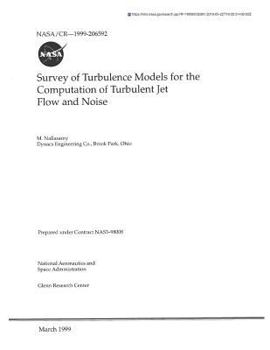Survey of Turbulence Models for the Computation of Turbulent Jet Flow and Noise
The report presents an overview of jet noise computation utilizing the computational fluid dynamic solution of the turbulent jet flow field. The jet flow solution obtained with an appropriate turbulence model provides the turbulence characteristics needed for the computation of jet mixing noise. A brief account of turbulence models that are relevant for the jet noise computation is presented. The jet flow solutions that have been directly used to calculate jet noise are first reviewed. Then, the turbulent jet flow studies that compute the turbulence characteristics that may be used for noise calculations are summarized. In particular, flow solutions obtained with the k-e model, algebraic Reynolds stress model, and Reynolds stress transport equation model are reviewed. Since, the small scale jet mixing noise predictions can be improved by utilizing anisotropic turbulence characteristics, turbulence models that can provide the Reynolds stress components must now be considered for jet flow computations. In this regard, algebraic stress models and Reynolds stress transport models are good candidates. Reynolds stress transport models involve more modeling and computational effort and time compared to algebraic stress models. Hence, it is recommended that an algebraic Reynolds stress model (ASM) be implemented in flow solvers to compute the Reynolds stress components.Nallasamy, N.Glenn Research CenterTURBULENCE MODELS; AERODYNAMIC NOISE; COMPUTATIONAL FLUID DYNAMICS; JET AIRCRAFT NOISE; NOISE PREDICTION; FLOW DISTRIBUTION; TURBULENT JETS; REYNOLDS STRESS; STRESS ANALYSIS; MATHEMATICAL MODELS; ANISOTROPY
Format:Paperback
Language:English
ISBN:1723765007
ISBN13:9781723765001
Release Date:January 1
Publisher:Independently Published
Length:42 Pages
Weight:0.27 lbs.
Dimensions:0.1" x 8.5" x 11.0"
Customer Reviews
customer rating | review
There are currently no reviews. Be the first to review this work.













